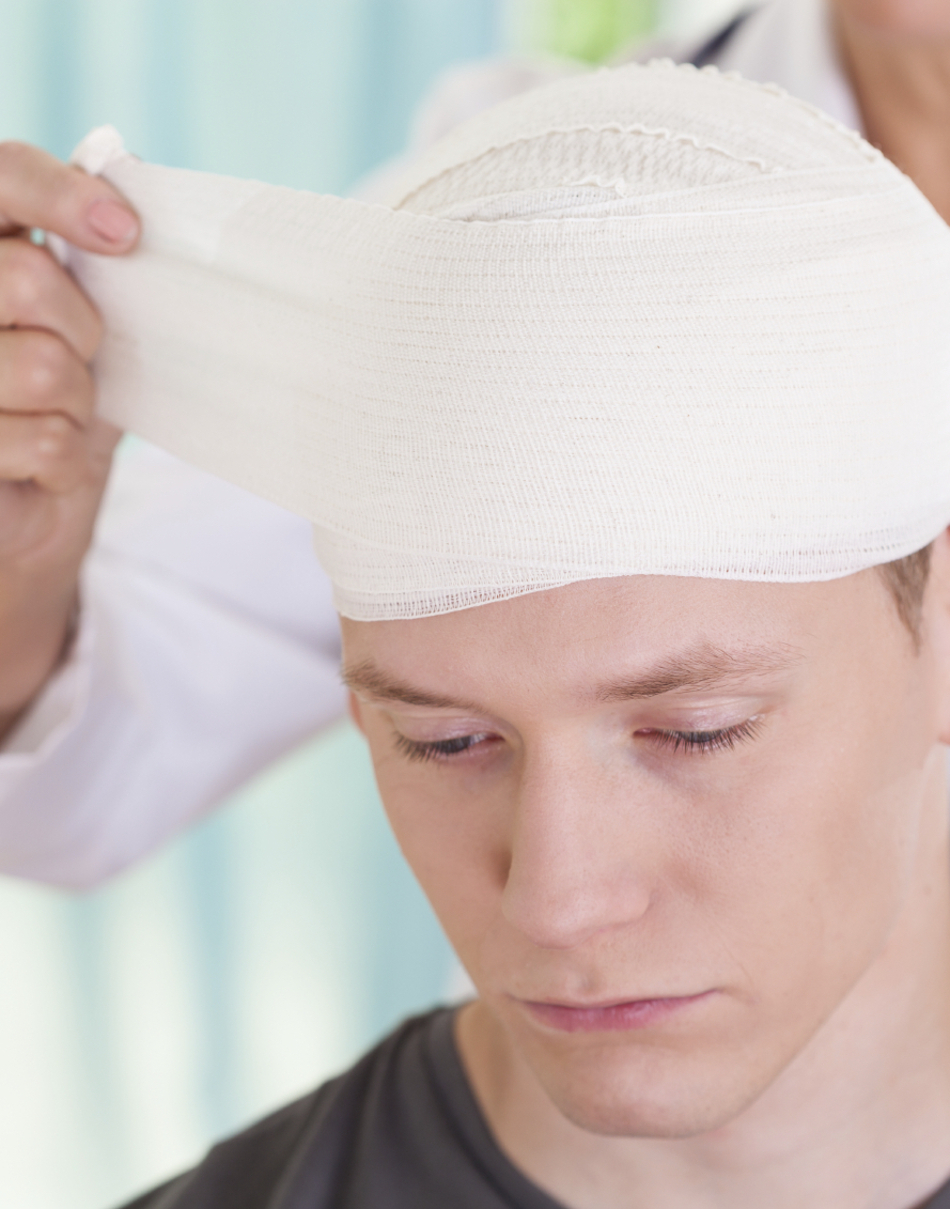
Interviewer: Recovering from a concussion, what you need to know is next on The Scope.
Announcer: Medical news and research from University of Utah physicians and specialists you can use for a happier and healthier life. You're listening to The Scope.
Interviewer: Dr. Greg Hawryluk is a neurosurgeon at University of Utah Health Care and a concussion expert. Help me understand what steps are involved for recovering from a concussion.
Dr. Hawryluk: It's important to know that any concussion needs to be seen by a doctor. These days even if there is a suspicion that you may have had a concussion, it's important to see a doctor. Some people have trouble recognizing the signs. It can be things like headache, dizziness, confusion, blurred vision, and just feeling funny. Sometimes those symptoms aren't apparent until maybe the next day. That's the first step is making sure you see a physician.
Interviewer: So don't self-treat. You wouldn't fix your broken arm. Don't try to fix a concussion.
Dr. Hawryluk: That's right. Don't try and fix your brain yourself.
Interviewer: Okay.
Dr. Hawryluk: The biggest advance that we've had in concussion over the last 10 years or so has been the recognition of the need for a gradual return to normal activities and the importance of rest. That's both mental rest and physical rest. This is one of the rare times where we'll counsel young patients not to do homework. In fact, even things like video games, we think can be a little too taxing for a recovering brain.
Interviewer: Really? When the brain is recovering it needs to rest like any other body part might to heal.
Dr. Hawryluk: That's what we are starting to learn.
Interviewer: Okay.
Dr. Hawryluk: That's really step one, it is to get to a doctor and get started on this pathway of greater recovery. We do talk about six steps in terms of recovery and it's really tailored towards athletes. Again, we start with complete mental and physical rest, and then if that goes well you can basically progress through these steps at one step a day. It means the very fastest you're going to get back to your sporting event is going to be about a week.
Once your symptoms have totally resolved or almost completely resolved, normally the next step is going to be resumption of light activities. That might be something like an exercise bike or a brisk walk or something that is not too taxing.
Interviewer: Let me back up. Step one, nothing, mental and physical rest. How many days is that?
Dr. Hawryluk: For sure, one day.
Interviewer: For sure, one.
Dr. Hawryluk: Yeah, it's really based on the symptoms. Once the symptoms have resolved, or almost resolved.
Interviewer: Then step two.
Dr. Hawryluk: Then you're ready to try step two.
Interviewer: Which is light activity, okay continue.
Dr. Hawryluk: What's interesting about concussion is that symptoms can . . . even though at rest your symptoms are gone, once you push your body a little bit it actually can bring on the symptoms. Really the goal of step two is to see if you can do some light physical activity and see if any symptoms happen. If that goes well, we step it up. Step three would be a return to sports-specific activity. For instance, if you're a hockey player, well, we'd say okay, you can go back and skate at this point. We certainly wouldn't want you participating in regular drills. We wouldn't want you participating in body contact. Step three would be return to sports-specific sort of activities.
Interviewer: At this point, could you start feeling those symptoms again?
Dr. Hawryluk: What we want to see is if at any one of these stages, you do have a recurrence of symptoms. We say well, we need to back up. Some doctors would recommend starting back at square one. A lot of people like myself also advised just taking one step back and seeing where you can get to with no symptoms and eventually trying to work your way back up the six steps.
Once you can do sports-specific activity without symptoms, the next step is going to be to participate in practices without body contact. If that goes well for a day, usually we will give the green light to participate in practice with body contact. Ultimately, the last stage is return to gameplay and normal activities.
Interviewer: This is very sports specific. What about someone that has suffered a concussion for some other reason that's not an athlete, and doesn't have practice. Do they go through the same steps?
Dr. Hawryluk: They do. This six-stage process is really built for athletes that most of whom are really keen to get back to playing. It's designed to get people back as fast as we think is safe. We apply the same principle to people that aren't athletes. The principles of rest and greater return to normal activities has been associated with the most efficient recovery, the least chance of setbacks. We think it may be associated with a reduced chance of the so-called post-concussion syndrome.
Interviewer: For an athlete, what is the danger of returning to full gameplay before you go through these steps?
Dr. Hawryluk: To be totally blunt, one of the biggest things we worry about is death. I say that with a bit of drama on purpose because as physicians, that is the biggest thing we want to prevent in concussion. Some very sad occurrences over the years has taught us that players that return to the sport while they're still symptomatic, in fact, even players that return to the same game, you're at risk of for something called Second Impact Syndrome. We don't fully understand what that is. Fortunately, it's rare. But there's something about an injured brain that it's quicker to swell. We've seen patients that get hit a second time that have dramatic and fatal brain swelling and there have been a number of deaths
So that's the single most important principle for us as physicians in managing concussion. The biggest principle we need coaches and players to be aware of is that if you're concussed, you can't go back to play that game or in any other games until you've been seen by a physician and you work through that greater return.
Interviewer: When it comes to the recovery process, what is the most important piece of advice you would have for somebody?
Dr. Hawryluk: What I often find is true both of athletes and people with jobs and things like that. People are dying to prove to themselves and they want to prove to other people that they are okay. They want to shake this off and they want to be normal. The challenge is that for a lot of patients, that's not a good approach because what happens is you find that you actually are having trouble. And getting back to your activities, if you do it too soon, it doesn't go very well. It kind of becomes a negative experience. Ultimately that can delay an ultimate successful return to what you're doing. The importance of going slow really is key here.
Interviewer: TheScopeRadio.com is the University of Utah Health Sciences Radio. If you like what you heard, be sure to get our latest content by following us on Facebook. Just click on the Facebook icon at TheScopeRadio.com.





